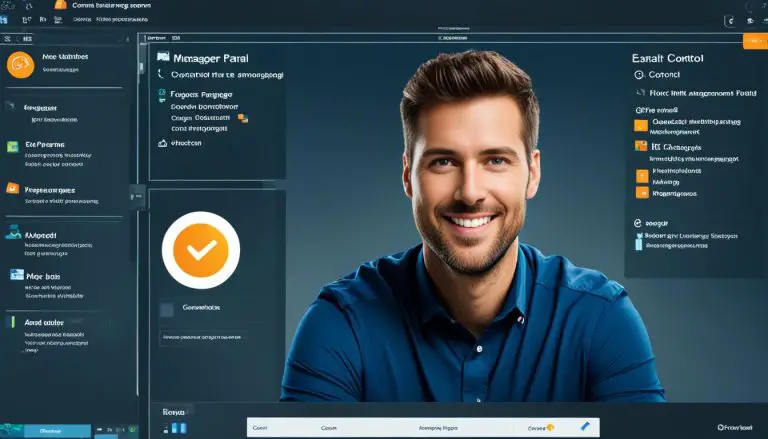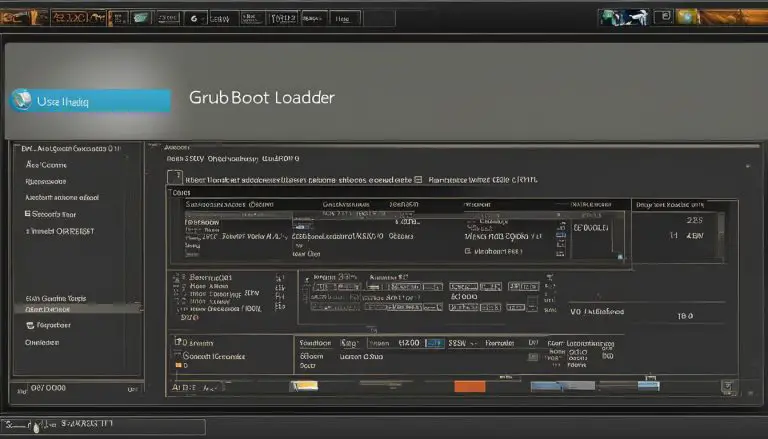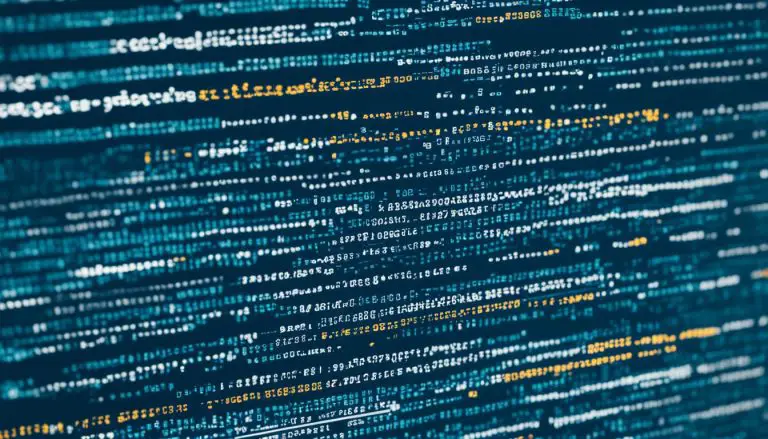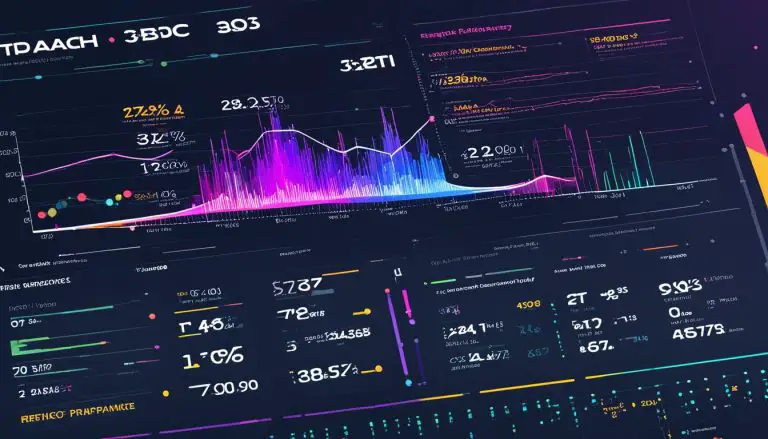Unraveling the Mystery: What Is Exception Handling in Programming
Exception handling is a crucial aspect of programming that allows developers to manage errors in a structured and efficient manner. It involves the use of try-catch blocks to catch and handle exceptions that may occur during the execution of a program. By using exception handling techniques like try-catch, developers can ensure that their code remains robust and can handle unexpected scenarios without crashing or causing unexpected behavior.
Key Takeaways:
- Exception handling is essential in programming to manage errors effectively.
- Try-catch blocks help catch and handle exceptions during program execution.
- Exception handling ensures code remains robust and avoids crashes.
- Developers can handle unexpected scenarios without compromising code integrity.
- Exception handling is a best practice for reliable and efficient programming.
Why is Exception Handling Important in Programming?
Exception handling is a fundamental aspect of programming that plays a vital role in ensuring code reliability and robustness. It allows developers to detect and handle errors in a controlled manner, preventing crashes and unexpected behavior. By using exception handling techniques like try-catch blocks, developers can effectively manage exceptions that may occur during program execution.
One of the key reasons why exception handling is important is that it improves the user experience. By catching exceptions and providing appropriate error messages, developers can provide helpful feedback to users when something goes wrong. This not only prevents users from being confused by cryptic error messages but also guides them towards taking the necessary steps to resolve the issue.
Additionally, exception handling helps in identifying and debugging issues during development. By catching exceptions and logging relevant information, developers can gain insights into the cause of errors and take the necessary steps to fix them. This improves code maintenance and readability, making it easier for developers to understand and modify the codebase in the future.
| Benefits of Exception Handling in Programming |
|---|
| Prevents crashes and unexpected behavior |
| Improves user experience with meaningful error messages |
| Facilitates debugging and issue resolution |
| Enhances code maintenance and readability |
In conclusion, exception handling is a critical aspect of programming that should not be overlooked. By implementing proper exception handling techniques, developers can ensure that their code remains reliable, robust, and user-friendly. It is a programming best practice that contributes to the overall success of software projects.
How Does Exception Handling Work?
Exception handling in programming works by using the throw operator to throw an exception when an error or exceptional situation occurs in the code. The thrown exception is then caught and handled using a try-catch block. The try block contains the code that may potentially throw an exception, and the catch block catches the exception and provides a specific action or error message to handle the exception.
For example, let’s say we have a piece of code that reads data from a file. If the file is not found or cannot be read, an exception may occur. In this case, we can use a try block to wrap the code that reads the file, and a catch block to handle the exception. If an exception is thrown, the catch block will be executed, allowing us to provide an appropriate error message or take alternative actions.
There are different types of exceptions that can occur in exception handling. Some common types include runtime exceptions, checked exceptions, and custom exceptions. Each type of exception requires specific handling techniques. Runtime exceptions are unchecked exceptions that do not require explicit declaration or handling. Checked exceptions, on the other hand, must be declared and handled in code. Custom exceptions are user-defined exceptions that can be used to handle specific scenarios or errors.
| Exception Type | Description |
|---|---|
| Runtime Exceptions | Unchecked exceptions that do not require explicit declaration or handling. Examples include NullPointerException and IllegalArgumentException. |
| Checked Exceptions | Exceptions that must be declared and handled in code. Examples include IOException, SQLException, and ClassNotFoundException. |
| Custom Exceptions | User-defined exceptions that can be used to handle specific scenarios or errors. |
By understanding how exception handling works and the different types of exceptions, developers can effectively manage errors and exceptions in their code, ensuring robustness and reliability.
Types of Exceptions in Exception Handling
Exception handling involves dealing with different types of exceptions that can occur in programming. Understanding these exception types is crucial for effectively handling errors and ensuring the reliability of code. In exception handling, there are two main categories of exceptions: checked exceptions and unchecked exceptions.
Checked Exceptions
Checked exceptions are exceptions that must be declared and handled in code. These exceptions are checked at compile-time, ensuring that the code handles and properly responds to potential exceptions. Examples of checked exceptions include IOException, SQLException, and ClassNotFoundException. When dealing with checked exceptions, developers need to add appropriate error handling mechanisms to handle these exceptions or propagate them to the calling code.
Unchecked Exceptions
Unchecked exceptions, also known as runtime exceptions, do not require explicit declaration or handling. These exceptions are not checked at compile-time and can occur during the execution of the program. Examples of unchecked exceptions include NullPointerException and IllegalArgumentException. While it is not mandatory to handle these exceptions, it is considered good practice to include appropriate error handling and logging mechanisms to prevent unexpected program terminations or undefined behavior.
Table: Comparison of Checked and Unchecked Exceptions
| Checked Exceptions | Unchecked Exceptions |
|---|---|
| Must be declared and handled | Do not require explicit declaration or handling |
| Checked at compile-time | Not checked at compile-time |
| Examples: IOException, SQLException, ClassNotFoundException | Examples: NullPointerException, IllegalArgumentException |
Understanding the different types of exceptions in exception handling is essential for effective error management in programming. By properly handling checked exceptions and including appropriate error handling mechanisms for unchecked exceptions, developers can create more robust and reliable code that can handle unexpected scenarios and provide a better user experience.
Best Practices for Exception Handling
When it comes to exception handling, there are several best practices that developers should follow to ensure their code remains robust and reliable. By implementing these practices, developers can effectively manage errors and exceptions, improving the user experience and facilitating effective debugging and maintenance.
Use Try-Catch Blocks
One of the key practices in exception handling is to use try-catch blocks. These blocks allow developers to catch and handle specific exceptions that may occur during the execution of their code. By enclosing potentially error-prone code within a try block and providing appropriate catch blocks, developers can gracefully handle exceptions and prevent crashes or unexpected behavior.
Handle Exceptions at the Appropriate Level
Another best practice is to handle exceptions at the appropriate level, considering the specific context and requirements of the application. This means catching and handling exceptions closer to where they occur, rather than propagating them up the call stack. By handling exceptions at the appropriate level, developers can increase code readability and maintainability.
Implement Global Exception Handling
In addition to specific try-catch blocks, implementing global exception handling can be beneficial. This involves capturing and handling unexpected exceptions that may not be caught by specific try-catch blocks. By implementing a global exception handler, developers can ensure that any unhandled exceptions are caught and handled appropriately, preventing crashes and providing a better user experience.
| Best Practices for Exception Handling |
|---|
| Use Try-Catch Blocks |
| Handle Exceptions at the Appropriate Level |
| Implement Global Exception Handling |
By following these best practices, developers can build more reliable and resilient applications. Exception handling is an essential aspect of programming, and by mastering these techniques, developers can effectively manage errors and ensure their code remains robust.
Common Mistakes in Exception Handling
When it comes to exception handling, developers often make some common mistakes that can lead to issues in their code. Two of these mistakes include using empty catch blocks and swallowing exceptions.
An empty catch block occurs when an exception is caught, but no handling or logging is performed. This can make it difficult to identify and debug issues, as there is no information about the exception or its occurrence. It is important to always provide appropriate handling or logging in catch blocks to ensure that exceptions are properly managed.
“Empty catch blocks are like sweeping problems under the rug. They may seem convenient at first, but they can lead to hidden bugs and make troubleshooting a nightmare.” – John Smith, Software Developer
Swallowing exceptions is another common mistake that developers should avoid. This happens when an exception is caught, but not rethrown or handled properly. When an exception is swallowed, it can result in unexpected behavior and make it challenging to trace the root cause of the problem. It is crucial to handle exceptions appropriately, either by rethrowing them for further handling or taking the necessary actions to resolve the issue.
Table: Common Mistakes in Exception Handling
| Mistake | Description |
|---|---|
| Empty catch blocks | Catching exceptions without providing any handling or logging |
| Swallowing exceptions | Catching exceptions but not rethrowing or handling them properly |
By avoiding these common mistakes and following best practices in exception handling, developers can ensure that their code remains robust and reliable, with effective error management and debugging capabilities.
Exception Handling in Java
Exception handling in Java is an essential feature that allows developers to manage errors and exceptions effectively during program execution. The Java programming language provides built-in mechanisms, such as try-catch blocks, to handle exceptions gracefully and ensure the robustness of the code.
The core concept of exception handling in Java revolves around the use of the try-catch block. The try block encloses the code that may throw an exception, while the catch block catches and handles the exception. This allows developers to anticipate and handle potential errors, preventing unexpected program termination.
Java has a hierarchical structure for exceptions, with the Throwable class at the top. This hierarchy allows for different types of exceptions to be caught and handled based on their specific characteristics. Checked exceptions, such as IOException, are required to be declared and handled explicitly, while unchecked exceptions, like NullPointerException, do not require explicit handling.
Java Exception Hierarchy
When it comes to exception handling in Java, understanding the exception hierarchy is crucial. The Java exception hierarchy starts with the Throwable class, which is the superclass for all exceptions and errors. The Throwable class has two subclasses: Error and Exception.
The Error class represents severe problems that are usually caused by the environment in which the application is running. These errors are not expected to be caught or handled by the application. Some common examples of errors include OutOfMemoryError and StackOverflowError.
The Exception class, on the other hand, represents exceptional conditions that can occur during the execution of a program. Exceptions can be further classified into two categories: checked exceptions and unchecked exceptions. Checked exceptions are exceptions that must be declared and handled explicitly by the developer, while unchecked exceptions are not required to be declared or caught.
| Throwable | Error | Exception |
|---|---|---|
| System Errors | Unchecked Exceptions | Checked Exceptions |
| OutOfMemoryError | NullPointerException | IOException |
| StackOverflowError | ArrayIndexOutOfBoundsException | ClassNotFoundException |
By understanding the Java exception hierarchy, developers can effectively handle different types of exceptions based on their specific characteristics, ensuring the reliability and robustness of their Java programs.
Exception Handling in C#
In C#, exception handling is an essential aspect of programming that allows developers to effectively manage errors and exceptions. It involves the use of try-catch blocks to catch and handle exceptions that may occur during the execution of a program. The try block contains the code that may potentially throw an exception, and the catch block catches and handles the exception. This approach ensures that errors are handled gracefully, preventing crashes and unexpected behavior.
One of the key features of exception handling in C# is the ability to implement global exception handling. This allows developers to define a central exception filter that will handle exceptions globally across the application. By implementing global exception handling, developers can ensure consistent and centralized handling of exceptions, improving code reliability and maintainability.
Here is an example of a C# try-catch block:
try
{
// Code that may throw an exception
}
catch (Exception ex)
{
// Code to handle the exception
}
By using try-catch blocks and global exception handling in C#, developers can effectively manage errors and exceptions, creating more robust and reliable applications.
Tips for Effective Exception Handling
Effective exception handling is crucial in programming to ensure the smooth execution of code and proper error management. Logging exceptions and implementing error reporting mechanisms are essential techniques that can greatly improve the process of debugging and resolving issues.
When an exception occurs during the execution of a program, it is crucial to log relevant information about the exception, such as error messages, stack traces, and timestamps. Logging exceptions provide developers with valuable insights into the cause of the problem and aids in effective debugging. By analyzing the logged information, developers can identify patterns, detect recurring errors, and implement necessary fixes.
Implementing error reporting mechanisms, such as sending error notifications or storing error logs, can help in promptly addressing and resolving issues. By actively monitoring and collecting error data, developers can gain a better understanding of the frequency and impact of different types of exceptions. This data can then be used to make informed decisions about improving code quality and stability.
Regularly reviewing and updating exception handling mechanisms based on feedback and error tracking is also vital for effective exception management. As new exceptions arise or existing ones change, it is important to revisit and adjust the handling strategies to ensure optimum error management. This iterative approach helps in enhancing the overall effectiveness of exception handling and results in more robust and reliable code.
By following these tips for effective exception handling, developers can minimize the impact of errors and exceptions, improve the user experience, and ensure the stability of their applications.
Best Practices for Error Messages in Exception Handling
When it comes to error messages in exception handling, providing meaningful and user-friendly messages is crucial. Clear and concise error messages can help users understand the issue and take appropriate actions. Here are some best practices for creating effective error messages in exception handling:
- Be specific: Error messages should clearly explain the problem and provide relevant details. Avoid generic messages that don’t provide enough information for users to troubleshoot the issue.
- Use plain language: Ensure that error messages are written in simple and understandable language. Avoid technical jargon or complex terminology that may confuse users.
- Provide guidance: Include suggestions or instructions on how to resolve the issue whenever possible. This can help users troubleshoot the problem and take the necessary steps to fix it.
- Be consistent: Maintain consistency in the style and format of error messages throughout the application. This helps users familiarize themselves with the error handling system and makes it easier for them to understand and respond to errors.
By following these best practices, developers can enhance the user experience and facilitate effective problem resolution in their applications.
“A good error message is informative, concise, and provides actionable guidance to users.”
Table: Error Message Examples
| Error Code | Error Message |
|---|---|
| 401 | Unauthorized access. Please login to continue. |
| 404 | The requested page cannot be found. Please check the URL and try again. |
| 500 | An internal server error occurred. We apologize for the inconvenience. Please try again later. |
Table: Common Error Codes and Messages
| Error Code | Error Message |
|---|---|
| 200 | Success. Your request has been processed. |
| 400 | Bad request. Please check your input and try again. |
| 403 | Forbidden. You don’t have permission to access this resource. |
Exception Handling Best Practices in Web Development
Exception handling plays a crucial role in web development, ensuring that errors and exceptions are managed effectively. To ensure a smooth and user-friendly experience, developers should adhere to the best practices of exception handling in web development. Implementing graceful error handling mechanisms is essential to prevent sensitive information from being exposed to users or potential attackers. By displaying user-friendly error messages and avoiding the display of technical details, developers can maintain the integrity and security of their web applications.
One of the key best practices in exception handling for web development is the implementation of a central error handling mechanism. This mechanism allows for consistent handling and reporting of exceptions across the application. By centralizing the handling of exceptions, developers can ensure that proper actions are taken for each exception, and the appropriate error message is provided to the user.
To effectively manage exceptions in web development, developers should also consider implementing monitoring and logging mechanisms. These mechanisms allow for the proactive identification and resolution of issues by capturing and storing exception information. By monitoring and logging exceptions, developers can gain insights into the frequency and nature of exceptions, enabling them to identify patterns and take appropriate actions to prevent future occurrences.
Example of Central Error Handling Mechanism:
try {
// Code that may throw an exception
} catch (Exception ex) {
// Log the exception
Logger.log(ex);
// Display a user-friendly error message
Response.write(“An error occurred. Please try again later.”);
}
Exception handling in web development requires careful consideration and adherence to best practices. By implementing graceful error handling mechanisms, centralizing error handling, and monitoring and logging exceptions, developers can ensure the reliability and integrity of their web applications.

Conclusion
In conclusion, the importance of exception handling in programming cannot be overstated. Exception handling allows developers to effectively manage errors and exceptions, ensuring that their code remains robust and reliable. By using try-catch blocks and handling different types of exceptions, developers can prevent crashes and unexpected behavior, improving the overall user experience.
Implementing best practices in exception handling is crucial for successful programming projects. Developers should handle exceptions at the appropriate level and consider the specific context of their application. Implementing global exception handling and proper logging and error reporting mechanisms are essential for effective debugging and maintenance of code.
By understanding the importance of exception handling and following best practices, developers can create more resilient and user-friendly applications. Exception handling improves code integrity, facilitates effective issue resolution, and contributes to the overall success of programming projects. So, remember to prioritize exception handling and implement best practices in your development process.
FAQ
What is exception handling in programming?
Exception handling is a crucial aspect of programming that allows developers to manage errors in a structured and efficient manner. It involves the use of try-catch blocks to catch and handle exceptions that may occur during the execution of a program.
Why is exception handling important in programming?
Exception handling is important in programming because it allows developers to detect and handle errors in a controlled manner, preventing crashes and unexpected behavior. It improves the user experience, helps in identifying and debugging issues, and ensures code reliability and robustness.
How does exception handling work?
Exception handling works by using the throw operator to throw an exception when an error or exceptional situation occurs in the code. The thrown exception is then caught and handled using a try-catch block. The try block contains the code that may potentially throw an exception, and the catch block catches the exception and provides a specific action or error message to handle the exception.
What are the types of exceptions in exception handling?
There are different types of exceptions that can occur in exception handling. Checked exceptions are exceptions that must be declared and handled in code, while unchecked exceptions (or runtime exceptions) do not require explicit declaration or handling. It is important to understand and handle these exceptions appropriately to ensure code integrity and reliability.
What are the best practices for exception handling?
Some best practices for exception handling include using try-catch blocks to handle specific exceptions, implementing global exception handling, and ensuring proper logging and error reporting. Handling exceptions at the appropriate level and regularly reviewing and updating exception handling mechanisms are also recommended.
What are the common mistakes in exception handling?
Common mistakes in exception handling include using empty catch blocks, which ignore exceptions without providing any handling or logging, and swallowing exceptions, where an exception is caught but not rethrown or handled properly. It is important to avoid these mistakes and instead provide meaningful error messages and take appropriate actions.
How does exception handling work in Java?
Exception handling in Java involves the use of try-catch blocks. Java has a hierarchy of exception classes, and exceptions are categorized as checked exceptions and unchecked exceptions. Understanding the Java exception handling mechanism and hierarchy is important in effectively managing errors and exceptions in Java programs.
How does exception handling work in C#?
Exception handling in C# is similar to Java and involves the use of try-catch blocks. C# also allows for global exception handling, where an exception filter can be implemented to handle exceptions globally across the application. By using try-catch blocks and global exception handling, developers can effectively manage errors and exceptions in their C# applications.
What are some tips for effective exception handling?
Some tips for effective exception handling include logging exceptions, implementing error reporting mechanisms, and regularly reviewing and updating exception handling based on feedback and error tracking. These practices help in debugging, identifying root causes, and efficiently resolving issues.
What are the best practices for error messages in exception handling?
The best practices for error messages in exception handling include providing meaningful and user-friendly messages that communicate the issue clearly. Error messages should be concise, specific, and include relevant information such as error codes, data, and suggested solutions. Testing error messages and gathering user feedback can help in improving the overall effectiveness of error messages.
How does exception handling differ in web development?
Exception handling in web development requires additional considerations to prevent sensitive information from being exposed. Implementing graceful error handling mechanisms, displaying user-friendly error messages, and avoiding the display of technical details are important in web development. Implementing a central error handling mechanism, monitoring, and logging exceptions can also aid in proactively addressing issues in web applications.
- About the Author
- Latest Posts
Janina is a technical editor at Text-Center.com and loves to write about computer technology and latest trends in information technology. She also works for Biteno.com.






